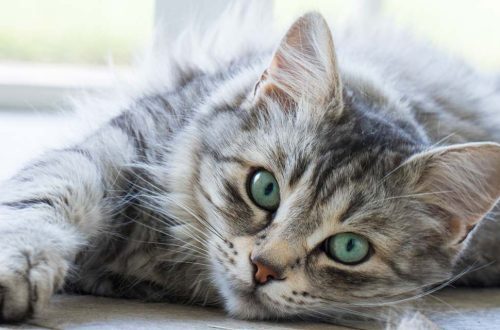
Why does a cat bite while playing?
In the midst of a fun game, the cat suddenly, without warning and for no apparent reason, grabs the owner by the finger and bites quickly and painfully. Why do they do it?
One of the most common reasons why family pets love to sink their tiny but sharp teeth into our skin is playful aggression. The tips in this article will help you protect yourself when your cat bites during play, switch its attention, or prevent such unwanted behavior.
Why do cats bite while playing?
In fact, if the cat bites the owner during the game, she seems to be saying: “Yes, we have fun, but isn’t it time to move to the next level?” Playing with the fluffy beauty is an amazing way to communicate, but if the cat’s playfulness turns into aggression, she may bite or may want to use her master’s hand as a chew toy.
As the ASPCA notes, while playing, cats “include typical predatory and playful behavior”: chasing, attacking, scratching, and biting their “adversary.” It is not unusual for them to do the same to their master, and once they get into a frenzy they find it hard to stop.
Sometimes cat owners don’t realize that they are unwittingly encouraging biting. As International Cat Care writes, when people play too “actively-aggressively” with young cats, “they often stimulate highly excitable behavior by encouraging growing kittens to bite and scratch in the name of playing at an intensity that can lead to injury.” But aggressive play is not the best option for cats of any age.
How to prevent bites
The best way to stop aggressive biting is to stop it before it becomes a habit.
Understanding a cat’s body language can go a long way in preventing biting while playing. When playing with a pet, it is easy for a person to forget, but special attention should be paid to her stance, as well as the position of her ears and tail.
Cats bite because they think their owner is their prey. Why does she start with a light bite? So she warns. If her eyes are wide, it’s time to slowly back away. And if she sits down and starts shaking her ass, the person is about to be ambushed.
 It is possible to play fun and very active games with a pet, but there are ways to do this without becoming a victim of his sharp fangs. For example, do not use fingers or hands as toys. Instead, get a real toy to play with, like a catnip mouse or a bird on a stick. If the cat is still attacking, you need to switch its attention by throwing the toy in another corner so that it chases after it.
It is possible to play fun and very active games with a pet, but there are ways to do this without becoming a victim of his sharp fangs. For example, do not use fingers or hands as toys. Instead, get a real toy to play with, like a catnip mouse or a bird on a stick. If the cat is still attacking, you need to switch its attention by throwing the toy in another corner so that it chases after it.
If a cat bites painfully while playing, do not allow yourself to react that will break the bond of trust. “Never physically punish or even touch your cat at such times,” emphasizes the Cornell Cat Health Center, “as this can make the cat fear people or be perceived as a game, which will lead to unwitting encouragement of such aggressive behavior.” If switching attention does not help, you need to exit the game and ignore further attacks from the cat. She will eventually take the hint and learn that such behavior is unacceptable.
Transition from cat bites to petting
Unexpected actions of a cat may surprise, but this does not mean that she has stopped loving family members. After all, pets have unique ways to show their affection, from head butts to so-called “love nibbles.” It’s normal for a furry friend to nibble on his finger gently. But if the cat begins to dig into the skin with all its might during the game, it’s time to take this behavior under control.
Rather than allowing biting at all, gentler displays of affection, such as rubbing and snuggling, should be encouraged. If you do not show interest in rough play, then the cat, too, is likely to grow cold towards it.
It is not always easy to change the behavior of a cat, but if you learn to switch her attention and not allow her to bite, this will help to significantly secure joint games.





